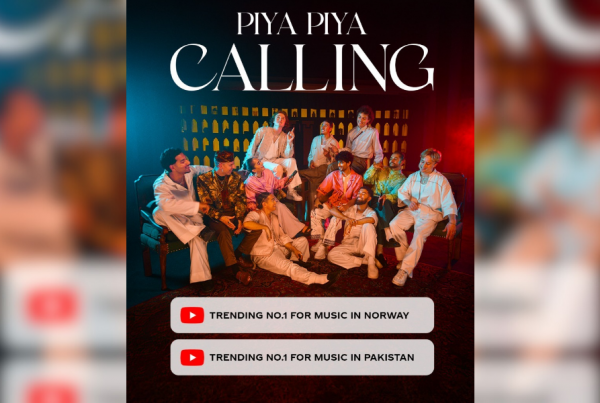The PFDC Sunsilk Fashion Week collaborated with TDAP to execute an event better geared for business
Last week the Pakistan Fashion and Design Council hosted their spring/summer edition of PFDC Sunsilk Fashion Week (PSFW) in Karachi as has now become tradition. The council hosts autumn/winter collections in March (Lahore) and spring/summer in Karachi (October). Two years and four fashion weeks old, aging with confidence, this fashion week exhibited maturity that comes only with consistency, commitment and strong leadership. The fact that much of the week’s oomph was sacrificed to accommodate stability was merely part of the growing up process.
The developments at hand were a strong substitute to the loss of fashion’s fundamental chutzpah. PFDC had collaborated with the Trade and Development Authority of Pakistan, timing the event with the annual Expo exhibition, hence exposing Pakistani fashion to around “600 traders/buyersâ€. There may have been no worthy replacements for Hilary Alexander, Alexandra Senes and the multitude of fashion specific foreign buyers and media that have been trendy regulars at PFDC’s previous weeks but this relationship with TDAP was in experimental stages and looking up.
Chief Executive TDAP, Tariq Puri, a man with a vision for fashion in a brief conversation with Dawn Images shared that TDAP’s involvement with fashion would be looking into foreign training for fashion students, facilitation of fashion exports and investment into making Pakistani fashion a brand that the whole world would desire. On the last day of fashion week, Spokesperson PFDC Hassan Shehryar Yasin revealed that the council was already in talks with Milan regarding exposing worthy Pakistani designers to the Milanese experience.
The Expo Centre wasn’t an easy venue to tackle but then fashion weeks are never easy; media and buyers in New York and London scuttle all across town to make it to shows on time. The value addition of having a secure and subsidized venue (courtesy TDAP) made up for the inconvenience of distance and traffic. And the evenings transpired in an error-free manner. While daily shows invariably fell an hour behind schedule, The Sunsilk Lounge offered hospitality, making the delay bearable.
But “less flash, more numbers,†was PFDC’s dominant tagline and it lost its wow factor in the process. There were almost no head turners: no conceptual gimmickry on stage, no front row celebrity sightings, only few innovative and groundbreaking collections and in a nutshell, no defining moments. Fashion week this time round was very guarded, as if it were on a budget-saving scheme. Even the lackluster Red Dress finale toed that line.
However, successful collections that one saw unravel on the runway reassured that the focus was surely still on fashion…
Top of the line-up
The power to innovate within one’s signature design philosophy is the marking of a great designer and that’s exactly what these labels shone through with.
Kamiar Rokni retained his love for colour with a collection that took a U-turn from Folkistan. While most designers continued to dabble in the ethnic smorgasbord, Kamiar Rokni (with creative partner, Tia Noon) took a clean cut towards minimalism inspired by the Mondrian movement. A hint of texture emerged in embroidered accents but the hero of this kaleidoscope was colour blocking and structure that pioneered a brand new dimension for women’s clothing.
Kami’s cut: It’s time to say goodbye to flare and unflattering volume.
Adnan Pardesy took a humble fabric like muslin and turned it into a fashionable fairy tale. Detailing has always been Pardesy’s passion and he committed himself to compressing yards of muslin into inches of well-constructed clothing. His collection bid adieu to the neutral colours he usually finds safety in and burst out with colours of the rainforest and left an impact just as rich and vibrant. Pardesy’s philosophy is to show couture that can be diffused into ready to wear and that’s exactly what this collection projected. It was the work of a sartorial mastermind.
Pardesy’s cut: Women must stop wearing clothes that look like tents.
Khaadi Khaas, Pakistan’s most highly valued brand, came forth with a melancholic tribute to Karachi city. Contextualizing is an important part of fashion as social referencing makes fashion relevant. The prints that Shamoon Sultan developed for this collection – from birds in captivity, vintage movie posters, crows, antique stamps to Urdu newsprint – were leitmotifs of what Karachi is all about. It was a far cry from Punjabi folklore that has been done to death on these runways and hence the impact was formidable.
Khaadi’s cut: Make fashion relevant and stop designing in an elitist bubble.
Putting retail’s best foot forward
Designers who retained their commercial viability in collections that were just as well suited to the runway also left a lasting impression.
Sania Maskatiya’s fashion week debut was extremely strong. She put up a collection that preserved her design aesthetic and even publicized a print that she has developed. The Dilkash print was heart of Maskatiya’s collection (also modeled by Humaima Malik in the finale run) while it’s soul lay in the youthful patterns that emerged in jumpsuits, contrasting back/front tunics, pleating and knotting as well as shifting tops worn over contoured camisoles.
Also commercially strong was FnkAsia’s interpretation of the Uzbek art of Suzani. Huma Adnan had developed a rugged, mountainous look that worked with an earthy palette and celebrated it with motifs of the ancient art. It was a well-thought out collection, enhanced by the complimenting shoes and jewelry.
Surprise of the week was Maria B, who presented her most impressive collection yet. Playing on an Aztec mood board with colours of nature – jute, ecru, burgundy and olive – there was an easy-going message that spoke of movement. Hints of organic detailing and texturing enhanced a trendy silhouette that began with asymmetrical kaftans, tunics and kurtas.
Clothes maketh a man!
Menswear at PSFW didn’t suffer a minute of banality. The metrosexuality that we have suffered an overdose of took the backseat for a stronger, better dressed man.
Republic was purely menswear, offering a couple of tribal treats in the seams of immaculate tailoring. Though a bit edgy for a conservative client – not everyone can palate pagan symbolism and snakeskin imagery – it was a collection that begged men to tweak their creative sides without compromising their masculinity. A piece or two was a gender bender but it was an overall Y-gene all the way.
Yahsir Waheed unraveled another homage to textiles, his love for fabric has always been his forte, and he remains loyal to it year after year. One has seen Waheed’s collections go from strength to strength ever since the first time he showed at PSFW and one can easily say this was his strongest ever. The colour-dipped ajrak, the frayed jackets and the altogether organic feel was very desirable.
Ammar Belal stuck to his signature western wear and paid tribute to the disco era of the seventies and eighties. While most people find Belal’s clothes irrelevant to the Pakistani market, it’s his unrelenting commitment to his vision for his brand that makes him such a strong designer. At the end of the day fashion is all about individuality and there is hardly a designer stronger than Ammar Belal when it comes to originality of style. This was a more wearable collection than his previous ones, the separates of which could be taken apart for softer, casual looks.
Contours of couture
AIFD graduate Zaheer Abbas and PIFD stalwart Hassan Shehryar Yasin were the only two designers who impressed with collections that bordered more on couture. Abbas’ signature drapes evolved with Roman myths in mind, his collection referring to the immobility of statues as opposed to the fluidity of Greek togas. There was beauty in his colour blocking and maturity in his silhouettes.
HSY’s collection was an extension of his brand’s identity. There were no bridals but what would the HSY brand be without bling? This time it surfaced in the form of glamorous gowns, the few eastern pieces modernized with the use of blazers. Hardly a novel concept, it did remind one of the panache of the sixties when high society women, cigarillos in hand, wore mink over their couture saris.
Back to High School
With Zonia, Batur, Irfan, Hammad ur Rehman and the PIFD group shows there were enough students in this fashion week to merit a separate day. One feels very strongly that students should not be juxtaposed with professional designers as critics and buyers just end up comparing apples and oranges.
That said, there was strength in students’ work – Zonia’s use of luminescent fabric, Batur’s brave cat-ear sleeves, Irfan’s diverse take on folklore and Hammad’s embellishment reflected merit in what the students are learning at school. While PIFD students remained anonymous, one designer Safa Tariq did leave a lasting impression with her ‘putli tamasha’ and another – unknown, who designed a white, layered gown to perfection – will be remembered as someone with huge potential. They would have been more effective had they been showcasing on a day dedicated to students.
Fashion week was still in its evolutionary stage when Mohsin and Akif were hailed and welcomed amidst professionals. Their kind of talent is yet to be seen. Akif has evolved as a mature designer with an inherent understanding of colour. Mohsin proved himself stronger this year with a better constructed and directed collection than he has ever designed before. Now retailing at multi-brand stores in Lahore and Karachi, they have qualified a slot amongst professionals. Students need to work harder to get there.
Photography: Faisal Farooqui
Â
Â









